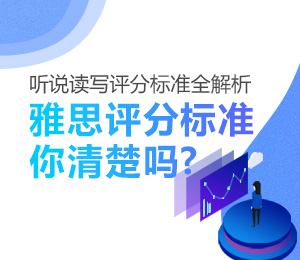雅思阅读模拟练习题及解析(10)
2017-10-13编辑: 环球教育整理来自: 互联网
雅思模拟试题在雅思备考过程中所起的作用不可小觑,通过模拟练习题,我们可以很直接地了解到自己的备考状况,从而可以更有针对性地进行之后的复习。希望以下内容能够对大家的雅思备考有所帮助!
The Triumph of Unreason
Part I
Reading Passage 1
You should spend about 20 minutes on Questions 1-13 which are based on Reading Passage1 below.
The Triumph of Unreason?
A.
Neoclassical economics is built on the assumption that humans are rational beings who have a clear idea of their best interests and strive to extract maximum benefit (or “utility”, in economist-speak) from any situation. Neoclassical economics assumes that the process of decision-making is rational. But that contradicts growing evidence that decision-making draws on the emotions—even when reason is clearly involved.
B.
The role of emotions in decisions makes perfect sense. For situations met frequently in the past, such as obtaining food and mates, and confronting or fleeing from threats, the neural mechanisms required to weigh up the pros and cons will have been honed by evolution to produce an optimal outcome. Since emotion is the mechanism by which animals are prodded towards such outcomes, evolutionary and economic theory predict the same practical consequences for utility in these cases. But does this still apply when the ancestral machinery has to respond to the stimuli of urban modernity?
C.
One of the people who thinks that it does not is George Loewenstein, an economist at Carnegie Mellon University, in Pittsburgh. In particular, he suspects that modern shopping has subverted the decision-making machinery in a way that encourages people to run up debt. To prove the point he has teamed up with two psychologists, Brian Knutson of Stanford University and Drazen Prelec of the Massachusetts Institute of Technology, to look at what happens in the brain when it is deciding what to buy.
D.
In a study, the three researchers asked 26 volunteers to decide whether to buy a series of products such as a box of chocolates or a DVD of the television show that were flashed on a computer screen one after another. In each round of the task, the researchers first presented the product and then its price, with each step lasting four seconds. In the final stage, which also lasted four seconds, they asked the volunteers to make up their minds. While the volunteers were taking part in the experiment, the researchers scanned their brains using a technique called functional magnetic resonance imaging (fMRI). This measures blood flow and oxygen consumption in the brain, as an indication of its activity.
E.
The researchers found that different parts of the brain were involved at different stages of the test. The nucleus accumbens was the most active part when a product was being displayed. Moreover, the level of its activity correlated with the reported desirability of the product in question.
F.
When the price appeared, however, fMRI reported more activity in other parts of the brain. Excessively high prices increased activity in the insular cortex, a brain region linked to expectations of pain, monetary loss and the viewing of upsetting pictures. The researchers also found greater activity in this region of the brain when the subject decided not to purchase an item.
G.
Price information activated the medial prefrontal cortex, too. This part of the brain is involved in rational calculation. In the experiment its activity seemed to correlate with a volunteer's reaction to both product and price, rather than to price alone. Thus, the sense of a good bargain evoked higher activity levels in the medial prefrontal cortex, and this often preceded a decision to buy.
H.
People's shopping behaviour therefore seems to have piggy-backed on old neural circuits evolved for anticipation of reward and the avoidance of hazards. What Dr Loewenstein found interesting was the separation of the assessment of the product (which seems to be associated with the nucleus accumbens) from the assessment of its price (associated with the insular cortex), even though the two are then synthesised in the prefrontal cortex. His hypothesis is that rather than weighing the present good against future alternatives, as orthodox economics suggests happens, people actually balance the immediate pleasure of the prospective possession of a product with the immediate pain of paying for it.
I.
That makes perfect sense as an evolved mechanism for trading. If one useful object is being traded for another (hard cash in modern time), the future utility of what is being given up is embedded in the object being traded. Emotion is as capable of assigning such a value as reason. Buying on credit, though, may be different. The abstract nature of credit cards, coupled with the deferment of payment that they promise, may modulate the “con” side of the calculation in favour of the “pro”.
J.
Whether it actually does so will be the subject of further experiments that the three researchers are now designing. These will test whether people with distinctly different spending behaviour, such as miserliness and extravagance, experience different amounts of pain in response to prices. They will also assess whether, in the same individuals, buying with credit cards eases the pain compared with paying by cash. If they find that it does, then credit cards may have to join the list of things such as fatty and sugary foods, and recreational drugs, that subvert human instincts in ways that seem pleasurable at the time but can have a long and malign aftertaste.

相关阅读

-
预约雅思水平在线测试
获取0元体验课程












